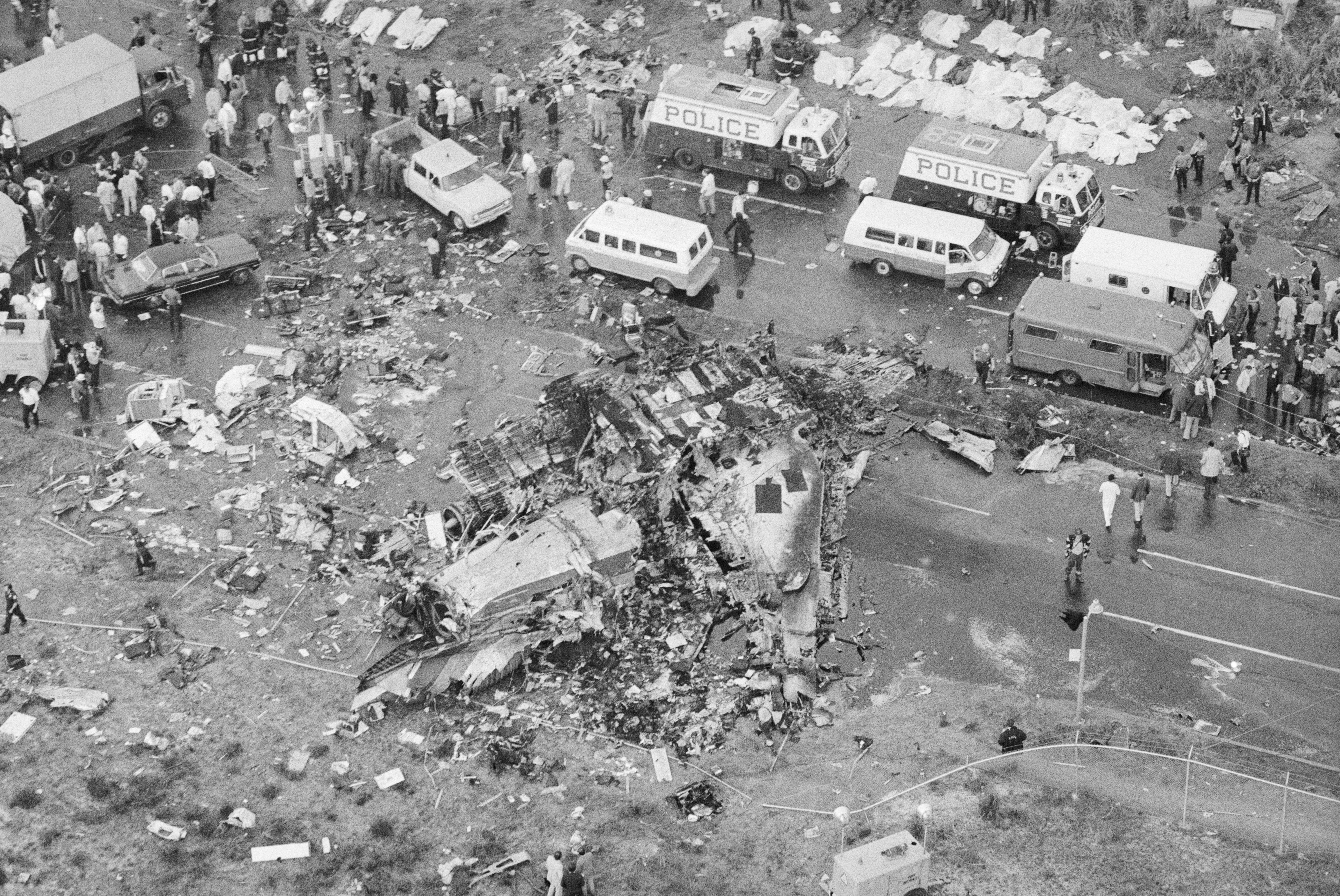Exactly 47 years ago today, Eastern Air Lines flight 66 crashed just before landing at John F. Kennedy International Airport (JFK) in New York City. The cause of the incident was high-intensity microburst-induced wind shear. Let’s take a closer look at the incident and what caused it.
An uneventful flight
Eastern Air Lines flight 66 was a scheduled passenger service from New Orleans International Airport (MSY) in Louisiana (currently known as Louis Armstrong New Orleans International Airport) to JFK. On June 24th, 1975, flight 66 was operated by a Boeing 727-200 registered as N8845E. The aircraft completed the majority of its flight normally but arrived near the New York City area just as a severe storm was brewing up.
The pilots of flight 66 were warned of the inclement weather conditions at JKF prior to their departure from New Orleans. But they decided to continue with the flight since the weather report predicted severe conditions would arise a full four hours after the planned arrival of flight 66. Much to the crew’s surprise, the thunderstorm was already waiting for them at JFK and had nearly downed several planes that landed before flight 66.
Flight details
The Boeing 727 aircraft departed New Orleans at around 13:19 and set itself on a north-easterly course for the three-hour journey. Data from ch-aviation shows N8845E was about 4.6 years old at the time of the incident. The airframe was ordered by Eastern Air Lines in December 1969 and was delivered less than a year later, on November 10th, 1970.
Flight 66 had 124 occupants, including eight crew members. The 727 was piloted by Captain John W. Kleven, an Eastern Air Lines veteran with almost 25 years of flying experience under his belt and a total of 17,381 flight hours, including 2,813 hours on the 727. The 54-year-old captain was accompanied by first officer William Eberhart, who had 5,063 hours of experience, including 4,327 on the Boeing 727. Both the pilot and the first officer had passed proficiency checks just a few months before the incident.
Also onboard the flight deck were 31-year-old flight engineer Gary M. Geurin and another flight engineer Peter J. McCullough. McCullough was giving his annual line check to the other flight engineer during flight 66.
What exactly happened?
While the Eastern Air Lines Boeing 727 was approaching JFK’s runway 22L, it was faced with a strong headwind of 25 knots. At around 400 feet, the aircraft experienced a severe downdraft, and at the same time, the headwind began losing intensity. As the downdraft was gaining speed, the headwind almost entirely vanished, which resulted in the aircraft losing lift and altitude.
However, the pilots had spotted the runway by this time and pretty much abandoned the instruments on his ILS approach. This resulted in none of the pilots realizing that the plane’s descent rate had more than doubled to 1,500 feet per minute. Upon finally realizing what was happening, the first officer increased engine thrust to take-off levels, but it was too little too late.
At around 16:05, flight 66 crashed into the approach towers just before runway 22L at JFK. The plane ruptured its fuel tanks upon impact with multiple towers, and the wreckage eventually caught fire. Of the 124 people onboard, only 11 survived.

.jpg)

.jpg)